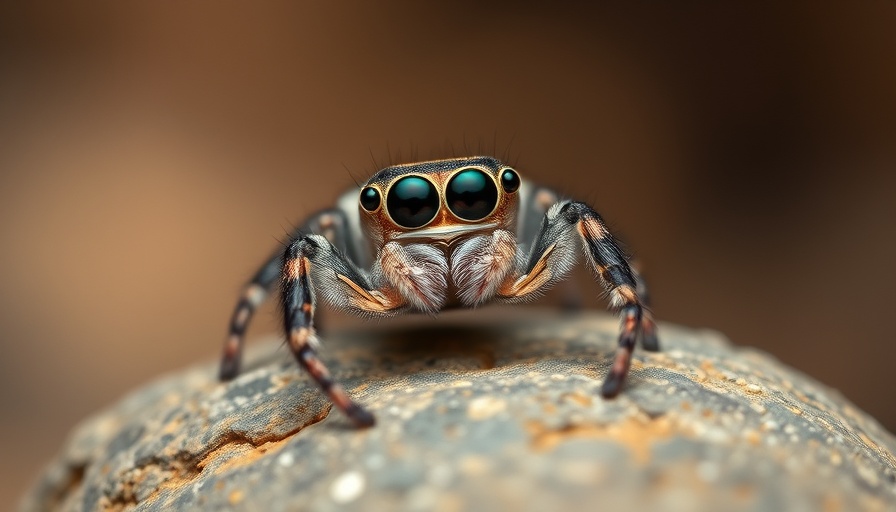
Why Jumping Spiders Are Becoming Beloved Companions
Once seen purely as pests, jumping spiders are now winning over hearts across the U.S. as endearing pets, boasting quirky personalities and astonishing cuteness. Breeders are witnessing a surge in demand for these diminutive arachnids, especially among women who began their journey in arachnophobia but have since found joy in these tiny ‘spoods.’ From their charming head tilts to their playful leaps, social media clips are transforming these creatures into internet sensations.
The Boom in Jumping Spider Enthusiasm
As the interest peaks, anecdotal evidence suggests some breeders have gone from selling only a few spiders weekly to thousands, with orders flooding in even through Instagram direct messages. Different species of jumping spiders, particularly the regal jumping spider, are now fetching prices between $30 and $100, making them a hot commodity among enthusiasts. Residing in vivid colors—from ink-black to rare whites—these little creatures not only captivate visually but also exhibit physical attributes that highlight their unique nature, such as leaping up to 40 times their body size.
Reframing Relationships with Nature
Owning a jumping spider is no longer merely about having a quirky pet; it’s about redefining how we interact with creatures often feared or misunderstood. Former arachnophobes describe their experience of overcoming fear through bonding with their spider companions, which leads to fresh perspectives of the natural world. Many find themselves refraining from killing household pests, instead choosing to delicately relocate them outside, an act reflecting growing empathy towards all living creatures.
Understanding Their Remarkable Intelligence
Despite their small size, jumping spiders display remarkable cognitive abilities. With brains no larger than a poppy seed, they showcase problem-solving skills and exceptional vision. Professor Nathan Morehouse at the University of Cincinnati indicates that these spiders use their hunting prowess and complex behaviors to navigate their environment effectively. Owners often compare them to mini cats, pointing out that they stalk and explore, adding an element of companionship to the experience of owning a spider.
Your Guide to Caring For a Jumping Spider
For those considering adding a jumping spider to their home, care is surprisingly straightforward. They thrive in small enclosures that mimic their natural habitat with good ventilation and proper humidity. Regular feeding includes live prey such as fruit flies and mealworms. Additionally, jumping spiders are known for their gentle handling; bites are typically rare and harmless, making them suitable for those new to arachnids.
Inside the Fascination: Future Opportunities
The growing popularity of jumping spiders signifies a broader societal shift towards appreciating simpler beings in our shared environment. Each time we nurture curiosity over fear, we inch closer to a world where all forms of life are respected. This emerging trend toward empathy brings significant implications for the conservation of ecosystems, as people learn to coexist harmoniously with all creatures life, great and small.
By exploring the fascinating world of jumping spiders, we not only embrace new pets but also cultivate a transformative relationship with nature around us. Take action today to advocate for respectful coexistence with all forms of wildlife!
 Add Row
Add Row  Add
Add 




Write A Comment